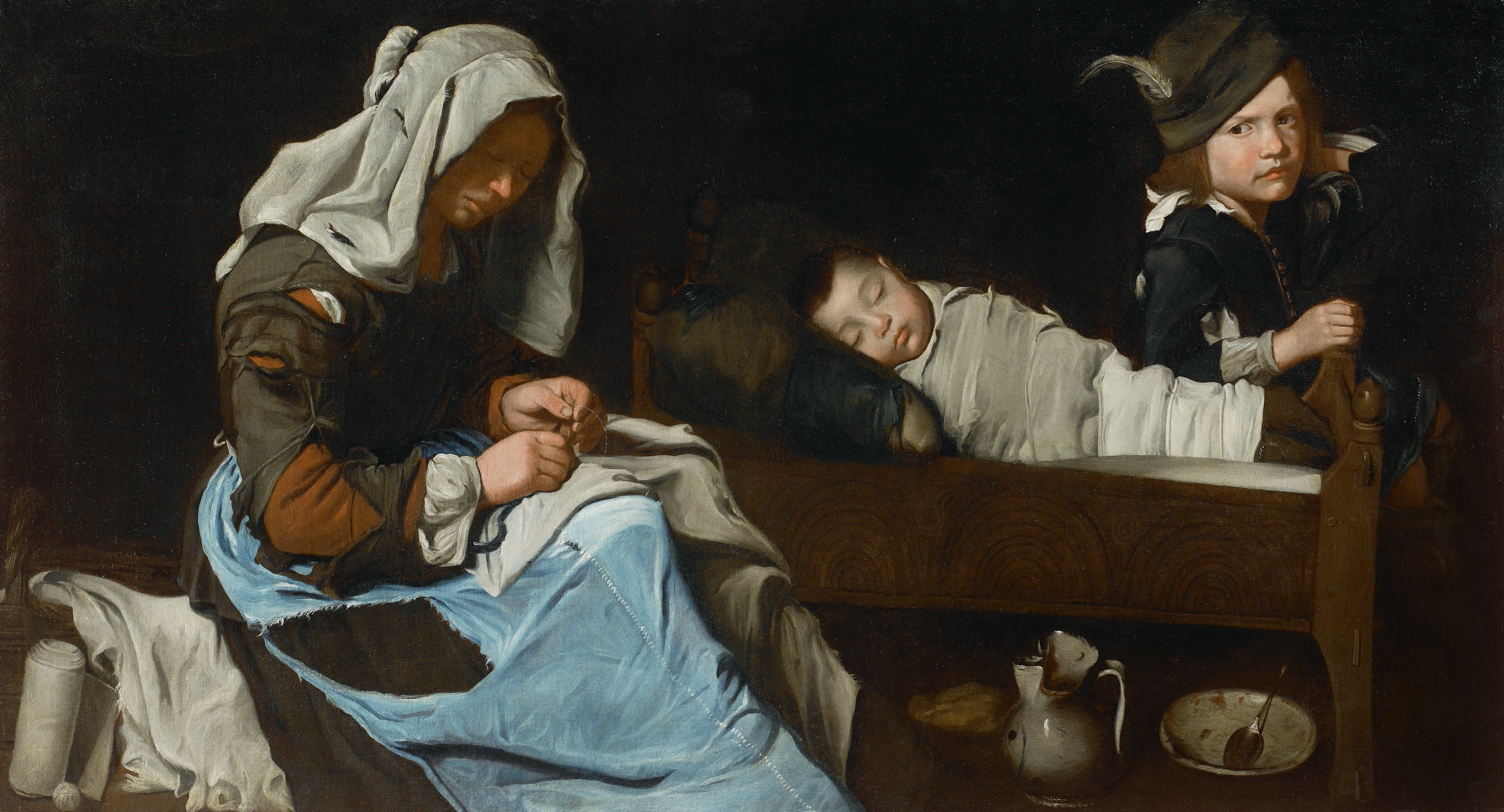
A new exhibition opening at Galerie Canesso will highlight the contested origins of blue jeans, with the display of 17th-century paintings that appear to depict the fabric. Levi Strauss is often credited with creating the sartorial staple in California 150 years ago, though France and Italy have made their own claims. But 10 early artworks featuring blue jeans complicate the narrative.
In 2004, curator Gerlinde Gruber reattributed these works to an unknown artist dubbed the Master of the Blue Jeans. By 2010, the Italian dealer Maurizio Canesso had bought up all of the mysterious painter’s works. Two will appear in his gallery’s 30th anniversary show, taking place in Paris (May 16—June 23) and Milan (May 23—June 23), but only one of them, Woman Begging with Two Children, will be for sale.
Since Galerie Canesso’s last exhibition in 2010, which presented the full-known oeuvre of the Master of the Blue Jeans, the dealer has located one additional example, which he bought in Buenos Aires.
The original 10 paintings by the Master have always been traced to Northern Italy during the 17th century, but were previously attributed to Michael Sweerts, Diego Velásquez, and Georges de Latour. While they are all early genre scenes centered on society’s poorest people, most feature flashes of prototypical jeans crafted from blue cloth and white thread.
Master of the Blue Jeans, A Woman Begging with Two Children (ca. 17th century). Photo: Galerie Canesso
“People are still not very familiar with the true history of blue jeans, as they confuse it with the material made by Levi Strauss,” Canesso told Artnet News. “One has to distinguish between blue jeans and denim: jeans come from Genoa, while denim comes from the French city of Nîmes.” The Italian specimens were woven with perpendicular stitches, while their French kin were woven in chevron patterns.
“An amazing thing is that until the 11th century, no one could wear blue fabric because they didn’t know how to make blue color adhere to the fabric,” Canesso continued. “Only in the year 1000 did this begin to happen using woad leaves, and at a very high cost. The genius of the Genoese was to find the indigo stone in India and make this an industrial and therefore low-cost process.”
Master of the Blue Jeans, Beggar Boy (ca. 17th century). Photo: Galerie Canesso
Historians had been aware of works by the Master of the Blue Jeans for decades before Gruber’s re-identification. Belgian architect Paul Eeckhout wrote about the 10 paintings in 1960s. They also appeared in a 1998 exhibition of Lombard and Venetian artists in Grenoble. Gerlinde reattributed the works based on their fascination with fabric, as well as the reappearance of figures like the young protagonist in Beggar Boy.
Genre painting flourished in the century that followed, but these works stand out. “The Master of the Blue Jeans is the only one who painted jeans,” Canesso wrote. “These paintings are the story of a family: they are always the same characters, wearing the same clothes—clothes that they used every day. And they are true jeans fabric: when it tears, the white thread comes out.”
This feature is especially visible in A Woman Sewing With Two Children—another work by the Master of the Blue Jeans set to go on view at Galerie Canesso. It will be on loan (like most works in the anniversary show) from the collector that Canesso originally sold it to.